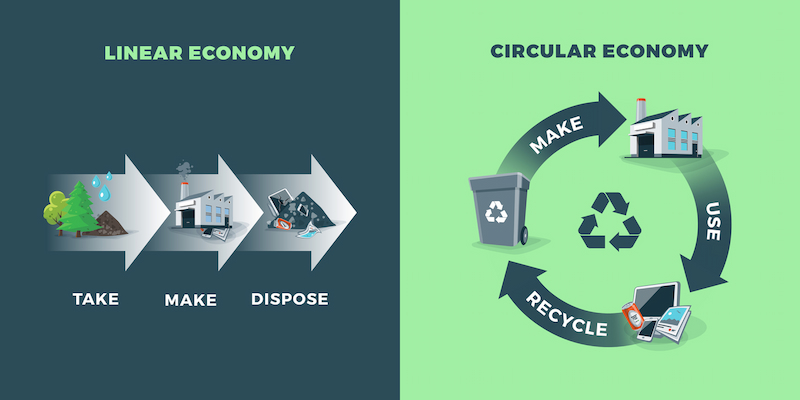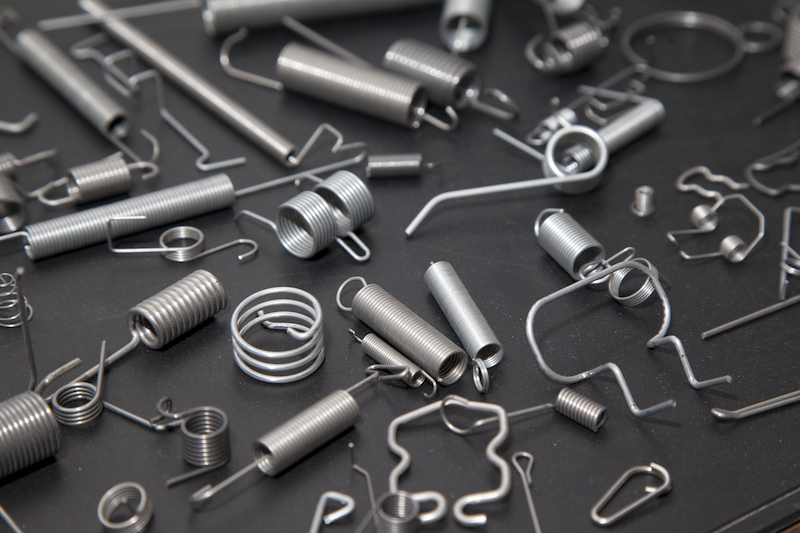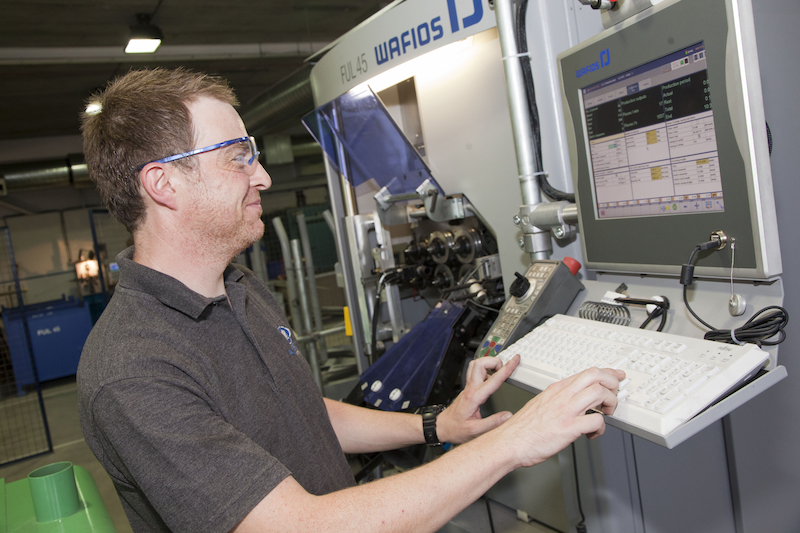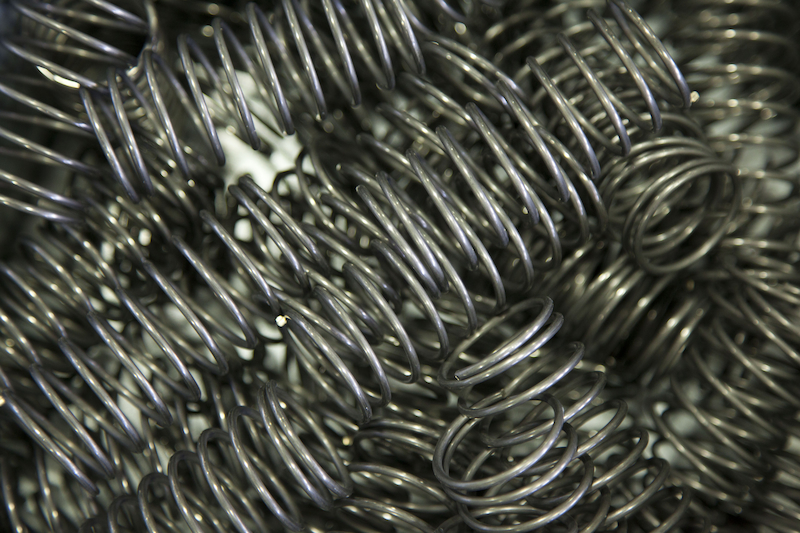As the world shifts its focus toward a greener, more sustainable future, the manufacturing industry continues to play a pivotal role in implementing and promoting sustainability. A large part of this effort involves reducing or eliminating wasted resources in manufacturing processes, breaking the linear model of taking, making and wasting in favour of a circular economy.
What is a Linear Economy?
The linear production model, or ‘take-make-waste’ as it is sometimes referred to, is an approach to manufacturing products in which raw materials are harvested, turned into products which are used briefly and then thrown away. The model works on the assumption that raw materials, energy and labour are infinite, which we know today, is untenable. Under a linear economy, waste is produced, and resources are consumed at every stage of the process.

What is a Circular Economy?
The circular economy model is a means of production in which excess materials that, under a linear model, would usually be discarded are fed back into the economy through various methods. This model aims to extend the lifespan of all materials used and significantly reduce the amount of wasted material. This is achieved by a number of routes, including:
- Sharing and reusing materials and resources
- Repairing over replacing
- Remanufacturing and recycling old products and materials over using raw materials
For this model to succeed, every part of the manufacturing process must be aligned with these goals, from early design stages to production and distribution. For example, when we design tension springs, care is taken to select spring materials that are both suitable for the springs’ intended application and 100% recyclable.

These preventative measures are the first steps to ensuring products remain with the circular system for as long as possible before the time comes to repair, reuse or recycle them. Only once those avenues have been exhausted should a material become waste and leave the cycle.
Why Waste in Manufacturing Is an Issue
The issues presented by wasted material in manufacturing processes are both economic and ecological. When manufacturers fail to utilise or recycle wasted material from production processes, costs are incurred, not only from purchasing raw materials that immediately become redundant and discarded but also from the transportation and disposal of those lost resources.
As of 1st April 2022, the standard rate for landfill tax in the UK is £98.60 per tonne. Companies that have not implemented a robust waste management plan and are still following the linear take-make-waste model are estimated to spend between 4-10% of their annual turnover on waste disposal. This number could be significantly reduced with the adoption of the circular economy model.
From an environmental standpoint, the need to adopt circular practices has never been more pressing. Linear processes are depleting finite natural resources rapidly. Moreover, those resources are often inefficiently used, and their acquisition leads to greenhouse gas emissions, which damage the environment. A mindset that focuses on quantity over quality results in excessive waste, pollution, and energy consumption. Luckily, many businesses like ourselves are rising to the challenge of greener manufacturing and are well on the way to achieving the UK government’s goal of net zero by 2050.
The Benefits of a Circular Economy
The advantages of transitioning to a circular economy are, again, both economic and ecological. The model demands manufacturers find ways to refine processes to minimise waste, improve efficiency and balance high output with high quality.
For example, when we make compression springs, we select materials for their strength, resistance to wear and shape memory, using a combination of new and recycled metal that is infinitely recyclable. The springs are produced using coiling CNC machines, allowing for high volume, precise spring output through pre-programmed instructions. This care and attention to the entire process allow us to increase productivity without needlessly wasting raw materials.

There are cost savings to be made in reducing energy consumption in processes like the example given above, recycling resources and mitigating waste disposal. In recent years, supply chains have become increasingly volatile. A circular economy builds resistance against rising material prices and resource scarcity by reducing the demand for raw materials like iron ore. Across our entire industry, millions of tonnes of raw material can be saved through recycling, remanufacturing, and designing products with those things in mind.
How We Play Our Part
Implementing a circular economy strategy is a big undertaking but one that spring manufacturers like ourselves are happy to embrace as we strive to reach net zero. We use high-quality, 100% recyclable materials to make our compression, tension and torsion springs, ensuring the product’s longevity and meaning that once the spring reaches the end of its life, it can be fully recycled and kept within the circular economy.
In addition, 90% of our packaging is from recycled sources, and we monitor our energy consumption closely to ensure we only use what we need. Sustainability is at the heart of everything we do at Airedale Springs, so if you’re interested in working with a spring manufacturer who recognises the importance of the circular economy, fill out our enquiry form to learn more about who we are and what we do.


